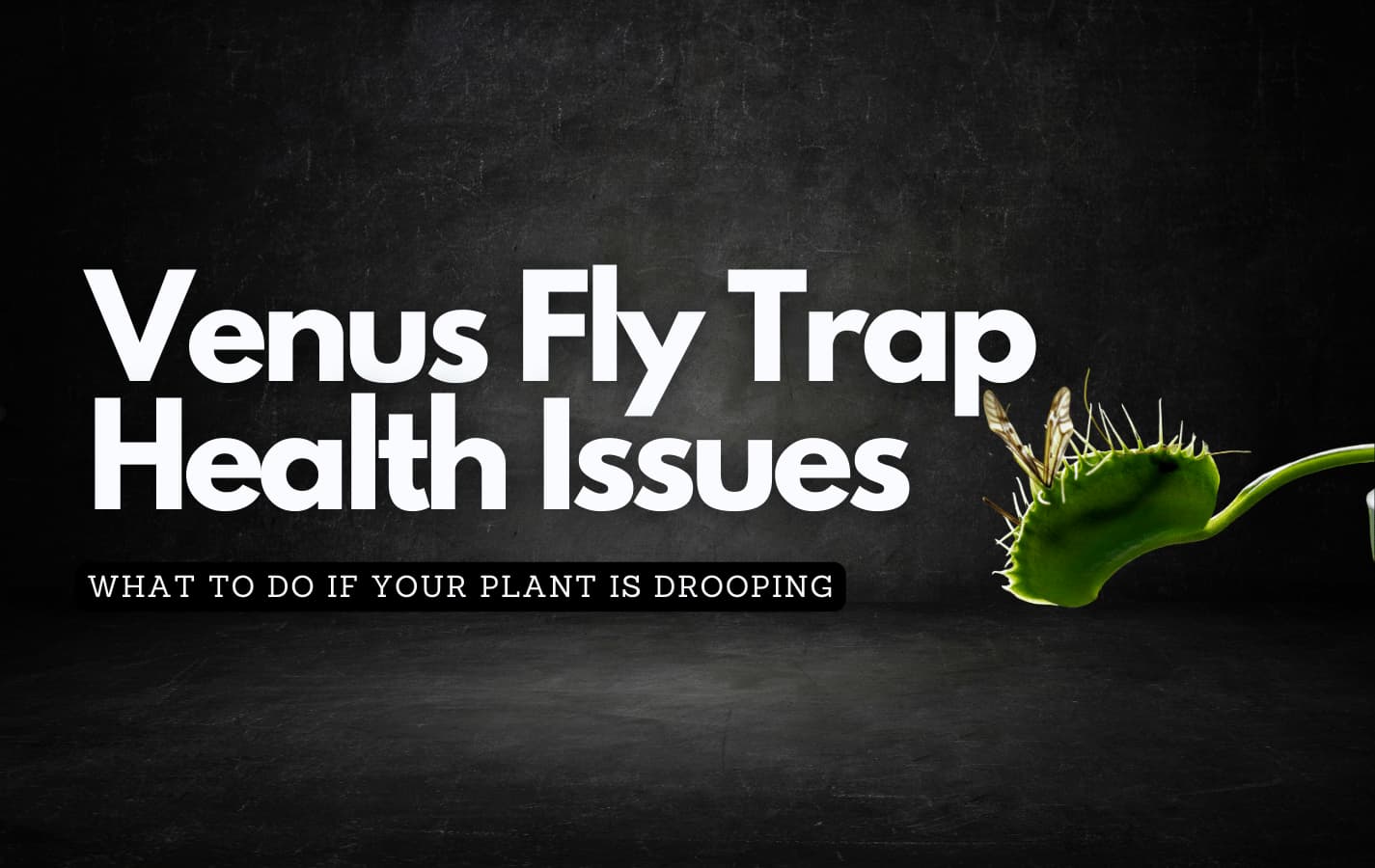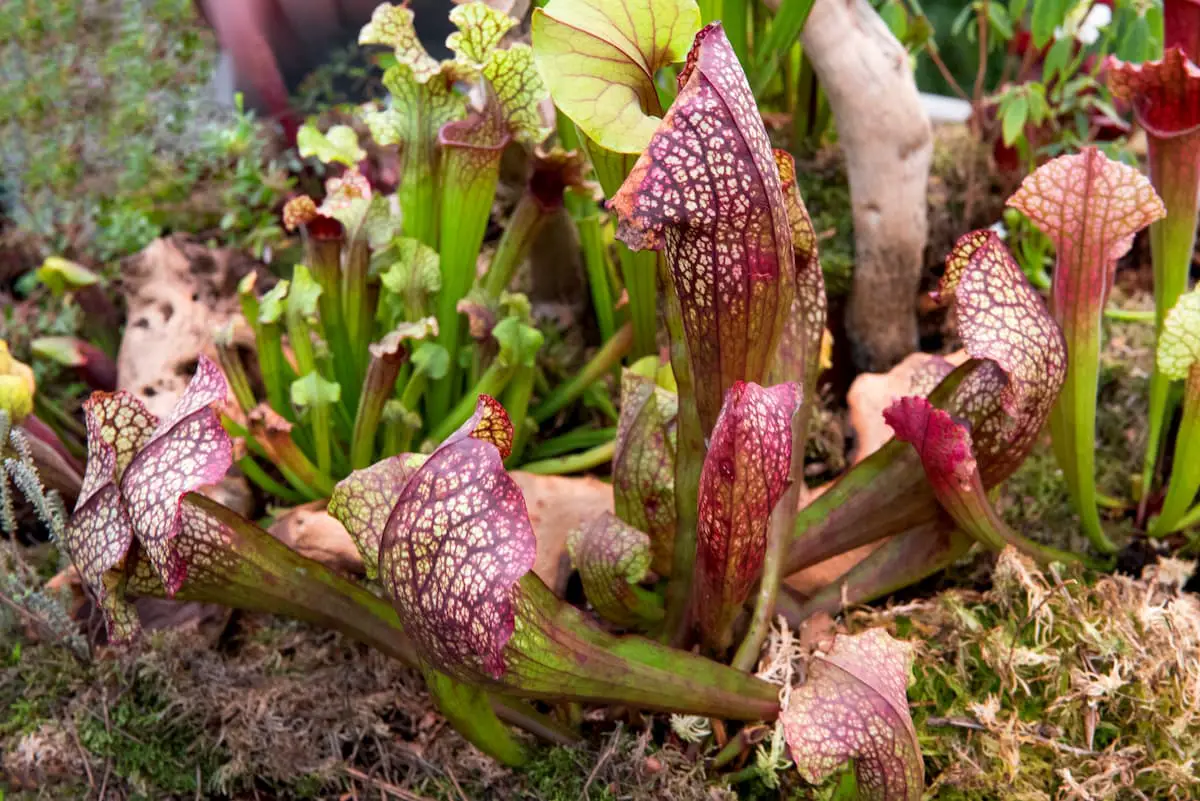If you are an avid plant lover, then you must have come across the quirky venus fly trap. This carnivorous plant is known for its ability to capture insects and digest them for survival.
However, if you notice your venus fly trap drooping, it could be a sign of trouble. Venus fly traps are relatively easy to care for, but they do require specific conditions to thrive. If not provided with the right environment or care, they can experience various issues.
One of the most common problems that venus fly traps face is drooping leaves. In this article, we will explore the reasons behind this issue and provide some practical solutions to help you restore your beloved plant to its former glory.
Understanding Venus Fly Trap Care
Venus fly traps are fascinating plants that require some specific care to thrive. One of the most important factors to consider is water frequency.
These plants require moist soil, but not too much water, as this can lead to root rot and other problems. It’s best to water your Venus fly trap when the soil feels slightly dry to the touch.
Another critical factor is sunlight exposure. These plants need plenty of bright, direct sunlight to grow and flourish.
However, be careful not to expose them to too much heat or direct light for extended periods, as this can cause leaf burn or other damage.
A good rule of thumb is to keep your Venus fly trap in a sunny window or under grow lights for around 12 hours per day.
If you’re noticing that your Venus fly trap’s leaves are drooping or even turning black, it’s essential to identify the cause quickly.
There are several reasons why this might be happening, including over or underwatering, lack of sunlight exposure, pests or disease, or incorrect soil type.
In the next section, we’ll explore these causes in more detail and provide tips for how to address them effectively.
Identifying The Causes Of Drooping Leaves
Understanding how to care for your Venus Fly Trap is crucial to ensuring its health and longevity. However, even with proper care, you may find that your plant’s leaves are drooping.
This can be a concerning issue for any plant owner, but with the right knowledge and actions, you can identify the root cause and work towards restoring your plant’s health.
One of the main causes of drooping leaves in Venus Fly Traps is improper watering frequency. These plants require moist soil at all times, but overwatering or underwatering can lead to drooping leaves.
It’s important to make sure that the soil is always damp but not soaking wet, as this can lead to root rot and other issues.
Another factor that can contribute to drooping leaves in Venus Fly Traps is poor soil quality. These plants require a specific type of soil that is low in nutrients and high in acidity.
If the soil is too rich or not acidic enough, it can lead to nutrient deficiencies and other problems that cause the leaves to droop.
To address these issues and restore your Venus Fly Trap’s health, you can take the following steps:
- Check watering frequency
- Use appropriate soil
- Avoid overwatering
- Ensure proper drainage
- Monitor humidity levels
Identifying the causes of your Venus Fly Trap’s drooping leaves is just one step towards restoring its health. In the next section, we’ll explore some solutions for addressing these issues and helping your plant thrive once again.
Solutions For Restoring Your Plant’s Health
Have you noticed your Venus fly trap drooping lately? The good news is that there are solutions to restore its health!
One of the most common reasons for drooping is over or under-watering. These plants require a consistent watering frequency, which means they should be watered once every week or two depending on the humidity levels in your home.
Another factor to consider is soil acidity levels. Venus fly traps prefer acidic soil with a pH between 4.5 and 5.5. If your plant is not thriving, it may be due to the soil being too alkaline or too acidic.
In this case, it’s important to test the pH level of the soil and adjust accordingly by adding sulfur or lime to balance it out.
In addition to these factors, it’s crucial to ensure that your plant is getting enough sunlight and nutrients. Consider placing it near a sunny window and using an insect-based fertilizer every few months.
With proper care and attention, your Venus fly trap should perk up in no time!
Preventing Future Drooping Issues
Now that you’ve restored your Venus fly trap’s health, it’s important to prevent drooping issues from happening again.
One key factor in preventing drooping is monitoring the watering frequency. Overwatering can cause the roots to rot and lead to drooping while underwatering can cause the plant to dry out and also lead to drooping.
To avoid this, make sure to water your Venus fly trap only when the soil is dry to the touch.
Another important aspect of preventing drooping is ensuring that your plant is in healthy soil. Venus fly traps thrive in nutrient-poor soil with good drainage.
If your soil doesn’t drain well, it can lead to root rot and cause your plant to droop. You can improve soil quality by adding perlite or sand to increase drainage and using a high-quality carnivorous plant soil mix.
By monitoring watering frequency and maintaining good soil quality, you can help prevent future drooping issues with your Venus fly trap.
Remember that these plants are delicate and require specific care, so be sure to research their individual needs before making any changes. With proper care, your Venus fly trap should stay healthy and happy for years to come.
Frequently Asked Questions
How Does A Venus Fly Trap Catch Insects?
Venus fly traps are fascinating plants that can catch insects.
They have special trigger hairs on their leaves, which when touched by an insect, will cause the leaf to snap shut.
Once closed, the digestion process begins as the plant secretes digestive enzymes to break down the insect for nutrients.
It’s important to note that Venus fly traps need to be in good health and properly cared for in order for them to successfully catch and digest insects using this unique mechanism.
Can I Feed My Venus Fly Trap With Anything Other Than Insects?
Did you know that venus fly traps only consume about 5-10 insects per year?
While it’s fascinating to observe these carnivorous plants catching their prey, plant nutrition experts suggest that alternative food sources can also be used to supplement the plant’s diet.
Some of the recommended alternatives include small pieces of raw chicken or fish, but be careful not to overfeed as this may cause harm to the plant.
It’s important to remember that while venus fly traps are unique in their ability to capture and digest insects, they still require proper nutrition for optimal growth and health.
How Often Should I Water My Venus Fly Trap?
When it comes to watering your Venus fly trap, it’s important to keep in mind that these unique plants have specific needs. One of the most critical factors to consider is the watering frequency.
Overwatering can lead to root rot and other issues, so it’s crucial to strike a balance between keeping the soil moist and not saturating it. Generally speaking, you should aim to water your Venus fly trap about once per week during the growing season, or whenever the top layer of soil feels dry to the touch.
However, if you notice that your plant is drooping or showing signs of distress, you may need to adjust your watering schedule accordingly. Checking soil moisture levels regularly can help ensure that your Venus fly trap receives just the right amount of hydration for optimal health and growth.
Can I Keep My Venus Fly Trap Indoors?
Growing a venus fly trap indoors can be a symbol of a unique and interesting addition to any household.
However, there are both benefits and drawbacks to keeping these carnivorous plants inside.
One benefit is that they can thrive in artificial light and controlled temperatures, making them easy to care for.
On the other hand, drawbacks include the potential for pests and lack of natural prey.
To keep your venus fly trap healthy indoors, it’s important to provide it with proper lighting, a humid environment, and distilled water.
Avoid fertilizers or tap water as these can harm the plant.
With these tips in mind, you can successfully care for your venus fly trap while enjoying its fascinating presence in your home.
How Long Does A Venus Fly Trap Live?
Venus fly traps have a lifespan of about 20 years if they are provided with proper care.
To maintain a healthy Venus fly trap, it is important to keep the soil moist and to provide it with plenty of sunlight. Additionally, avoid fertilizing the plant as this can harm its delicate roots.
It is also important to ensure that the Venus fly trap does not dry out by keeping it in a humid environment or placing it in a tray filled with water.
With these care tips in mind, you can enjoy your Venus fly trap for years to come!
Conclusion
In conclusion, owning a Venus fly trap can be a unique and enjoyable experience. The plant’s ability to catch insects is fascinating and entertaining to watch. However, it is important to take proper care of your Venus fly trap by watering it regularly and ensuring it receives enough sunlight.
If your Venus fly trap starts drooping, don’t fret! It may just be in need of some water or sunlight. Remember, these plants are living things that require attention and care.
By providing the right environment for your Venus fly trap, you can enjoy its company for several years. So go ahead and add this quirky plant to your collection – you won’t regret it!




Leave a Reply